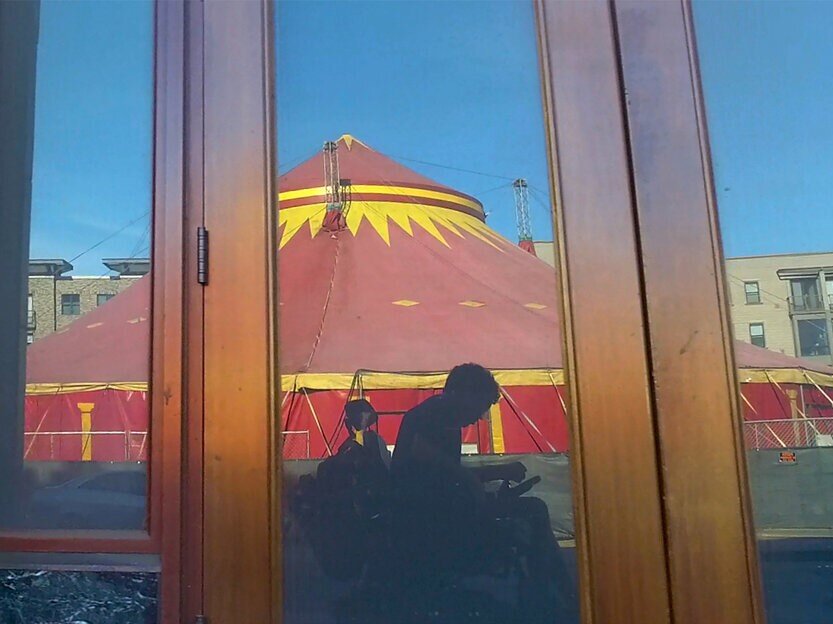
NBCU Academy’s Original Voices Fellowship supports documentary filmmakers who identify as – or showcase stories impacting – women, LGBTQ, communities of color and people with disabilities. Reid Davenport won the fellowship while working on his first feature film, “I Didn’t See You There,” which offers an “unflinching meditation on freakdom, (in)visibility, and the pursuit of individual agency” after a circus tent goes up outside Davenport’s apartment in Oakland, California. We invited Davenport to write about his directorial debut and what inspires his filmmaking.
If I told you I’m making a personal film about my disability, what do you imagine it would look like? Do you expect me to talk about how I became disabled? Do you want it to highlight my medical diagnosis? Perhaps you want to know how my parents dealt with having a disabled kid? Would you be disappointed if my film was about none of that?
There is a curiosity about disability that is sometimes as brazen as that of spectators of the circus Freak Show. There is what feels like a determination from strangers that I am irreparably different. The sidewalk I glide over in my wheelchair at times turns into a stage, and I can’t control it. The Freak Show was a symptom and not a cause of a society that gawks.
Rarely am I able to relate to stories about disability on screen. I wanted to be able to portray my perspective in a way that would be about how I see, instead of how I’m seen. So instead of turning the camera on myself, I turned it outward. Doing so allowed me to capture the devastation of a stranger’s gaze, the emptiness of being ignored, the physical weight of doors and the beauty I am privy to as a wheelchair-user and person with spasticity. In many ways, this film is an invitation to see through my eyes, a formal strategy successfully used in Chantal Ackerman’s “News from Home,” Kirsten Johnson’s “Cameraperson,” and Jason DaSilva’s “When I Walk.”
The footage is unconventional, but not meant to be read as “the best I can do,” as special. Instead, it will be read as aesthetically pleasing in its own right. The legendary disability scholar Paul K. Longmore wrote about how disability is generative and how impairment produces talent, skills and opportunities that otherwise would not be realized. I literally see the world differently than most people, whether it’s my lower situated angle from my wheelchair, my subconscious cautionary heightened perception of the ground I walk on, or the comparatively weakening muscles in my left eye. In this vein, the transitions between different shots will be driven primarily by aesthetic congruences in composition and shape rather than narrative considerations.
The right time to make this film was 50 years ago, was 10 years ago, is perhaps going to be 20 years in the future. But if this film makes my so-called unique perspective a little more common, a little more nuanced, a little more boring even, then I will have chipped away at the corrosive legacy of the Freak Show, a legacy that still resonates within all of us.
Update, July 24, 2023: Since this article was published in October 2021, “I Didn’t See You There” has won the Directing Award at the 2022 Sundance Film Festival and the Grand Jury Award at the 2022 Full Frame Documentary Film Festival. It was also nominated at numerous other festivals, including Film Independent Spirit Awards.



